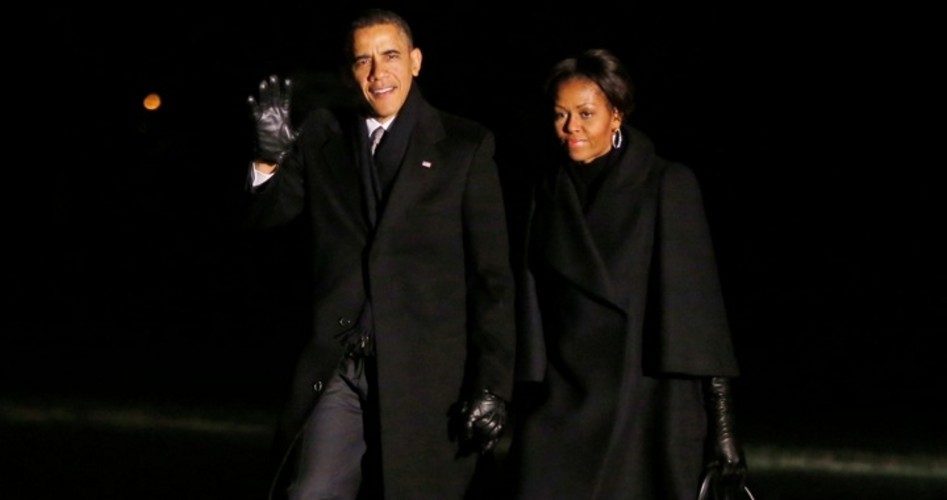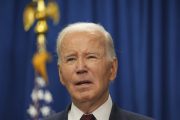
“O, reform it altogether. And let those that play your clowns speak no more than is set down for them.”
President Obama and his handlers go to great length to capture him in very controlled, popularly palatable pictures.
In an op-ed published Wednesday, December 11 in the New York Times, Santiago Lyon describes how despite his campaign promises of increased transparency, openness, and access, President Obama and his handlers offer observers a very carefully crafted image. Lyon writes that the Obama administration:
has systematically tried to bypass the media by releasing a sanitized visual record of his activities through official photographs and videos, at the expense of independent journalistic access.
The White House-based press corps was prohibited from photographing Mr. Obama on his first day at work in January 2009. Instead, a set of carefully vetted images was released. Since then the press has been allowed to photograph him alone in the Oval Office only twice: in 2009 and in 2010, both times when he was speaking on the phone. Pictures of him at work with his staff in the Oval Office — activities to which previous administrations routinely granted access — have never been allowed.
According to the title of his piece, Lyon interprets the president’s image manipulation as an effort to control perception in an Orwellian manner.
In 1984, George Orwell described memory holes, a tool of the Ministry of Truth whereby image and information could be controlled, revised, and censored.
The memory hole is a slot through which politically inconvenient or embarrassing photos and records are destroyed. Lyon sees President Obama’s publicity policies as analogous to throwing discordant images down a memory hole.
Recalling recent presidential events, Lyon presents evidence for his Orwellian hypothesis. Lyon says the scrubbing goes something like this:
An event involving the president discharging his official duties is arbitrarily labeled “private,” with media access prohibited. A little while later an official photo is released on the White House Flickr page, or via Twitter to millions of followers. Private? Hardly.
These so-called private events include meetings with world leaders and other visitors of major public interest — just the sorts of activities photojournalists should, and used to, have access to.
In response to these restrictions, 38 of the nation’s largest and most respected media organizations (including The New York Times) delivered a letter to the White House last month protesting photojournalists’ diminished access.
A deputy press secretary, Josh Earnest, responded by claiming that the White House had released more images of the president at work than any previous administration. It is serving the public perfectly well, he said, through a vibrant stream of behind-the-scenes photographs available on social media.
Then, after the appearance has ended:
The official photographs the White House hands out are but visual news releases. Taken by government employees (mostly former photojournalists), they are well composed, compelling and even intimate glimpses of presidential life. They also show the president in the best possible light, as you’d expect from an administration highly conscious of the power of the image at a time of instant sharing of photos and videos.
By no stretch of the imagination are these images journalism. Rather, they propagate an idealized portrayal of events on Pennsylvania Avenue.
While compelling, Lyon’s parallel of President Obama to a literary figure or plot is not the first such comparison.
In 2009, while campaigning for president, Mitt Romney compared President Obama’s hesitation to announce and stick to a consistent policy in Afghanistan to Hamlet’s immortal vacillations as contained in Shakespeare’s poignant “To be or not to be” soliloquy:
And by the way, this Hamlet performance that we’re seeing out of the White House is very, very disconcerting. The President has known about this issue [the need to partner with one or another of the various Afghan factions] for a long time. He received the report from General McChrystal what, four months ago? And has not been able to make a decision. This is very, very unfortunate for the people there and for our troops.
Although not in the way Romney or Lyon intended, President Obama sees himself as an heroic, literary man for all seasons, as did Hamlet. Neither Hamlet nor Barack Obama, however, ever did anything more noble than enticing others to frighten their enemies with “false fire.”
In fact, the behavior of both men evinces a belief that being inspiring is all it takes to be a strong leader. Unfortunately for those who genuinely look to them for direction, consistently demonstrating one’s speechmaking talent is not legitimate preparation for leadership.
The president’s conviction of his own greatness is reminiscent of that experienced by Hamlet. Despite his unchecked rage and violent outbursts, Hamlet did nothing of any real significance, unless you count making innumerable speeches, tricking those of lesser intellect, pretending to be crazy, and letting others take the blame for his ineptitude and the missteps that follow.
What has President Obama done to inspire the nation’s confidence? Despite his promises of “hope and change,” Barack Obama has taken great aim in destroying the Constitution. Cleverly, however, he hides behind the actions (albeit arguably treasonous and certainly unconstitutional actions) of his surrogates, thus separating himself from any ill consequences of the same and masterfully perpetuates his mythical allure as a visionary.
What is Barack Obama’s vision and how has he worked to bring it to fruition? Again, although blessed with a top-notch education and rhetorical prowess, the early pages of his biography record nothing very remarkable or noteworthy.
Picture Hamlet, the son of a popular king of Denmark, but what has he to show for it: lots of moving, evocative speeches; average fencing skills; and a small coterie of devoted friends that eagerly dance to his mournful tune. In all, not much. Barack Obama could have employed his gifts in the accomplishment in his youth of something that would merit the adjective “presidential,” but alas we have some rousing speeches as a student, admitted abuse of drugs, nominal charity work, and organizing protests of asbestos removal and other puny causes. Judging from the page count, President Obama has spent more time writing autobiographies than anything else.
Of course, such self-promotion is vital to the sculpting and maintenance of his image as an insightful leader and a prodigious problem-solver. Never mind that the problems he tackles and the solutions he offers are all just philosophical musings written as stories where he is always proved right in the end and mammoth difficulties are dismissed with an epigram or an anecdote. As one author put it, “When rival princelings like [Eliot] Spitzer and [Andrew] Cuomo were accumulating executives’ scalps, the future President Hamlet was rehearsing his own story in a couple of bestsellers. Within their covers he could count himself a king of infinite space.”
As with the young Danish prince before him, storytelling is certainly one of President Obama’s hallmark strengths. It is undeniable that millions of Americans walk away from one of President Obama’s speeches feeling moved, enraptured, and reassured. To President Obama, such a reaction is a victory. Once again he effectively “speechified” his way into a well-spread conception of leadership. He has “inspired the American people to rally behind a common purpose.” That such hollow performances can be transformed into convincing evidence of authority and command is the core of his genius.
As Lyon’s opinion piece rightly reports, Obama instinctively realizes that in this age of sound bites and celebrity, a man needn’t be a proven leader, he only needs to look or sound like a proven leader. If he wants to be thought of as an FDR for the new century, he just quotes FDR. If the next day he wants to be thought of as a young, dynamic icon in the JFK mold? Act JFK-like. It is tragically simple and simply tragic.
Like Hamlet, who believes that the men around him only achieved greatness through false sincerity and mock populism, Barack Obama imagines that his tiny triumphs and faux Midwestern charm cover a multitude of sins. As Hamlet says in Act I, “That one may smile and smile and be a villain.” If you can make people imagine you are something, then for all important purposes, you are that thing.
The recipe seems to be have been memorized very early on by President Obama. He has a coterie of handlers who work with an overstocked storeroom of the necessary image molding ingredients: smile broadly; toss out inspiring quips; be photographed in your shirtsleeves without a tie; appear on hip talk shows; hold “beer summits” in the back yard of the White House. Always look the part and always be ready for your close-up. Barack Obama may be a nondescript president with paltry political and questionable constitutional qualifications to be president, but he is a practiced poseur and is surrounded by first rate record revisers and image consultants.
In fairness to Barack Obama and all presidents in recent memory, they are mere players and act according to a script written in the hand of others more sinister and more corrupt. There has been in place for decades a program of globalism, financial manipulation, and constitutional destruction.
President Obama is just the latest personality to be put in the spotlight. While this does not absolve him of his complicity, it does perhaps explain how he came to be the so-called “leader of the free world” without ever being the leader of anything else.
Photo of President Obama and his wife: AP Images
Joe A. Wolverton, II, J.D. is a correspondent for The New American and travels frequently nationwide speaking on topics of nullification, the NDAA, and the surveillance state. He is the host of The New American Review radio show that is simulcast on YouTube every Monday. Follow him on Twitter @TNAJoeWolverton and he can be reached at [email protected]


